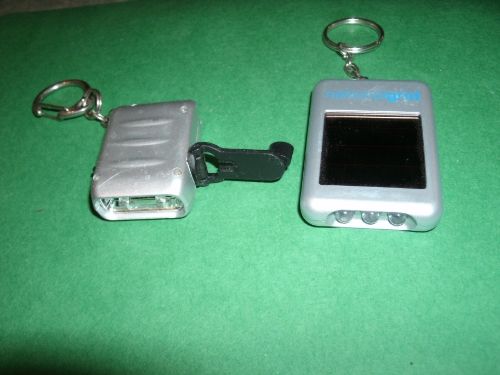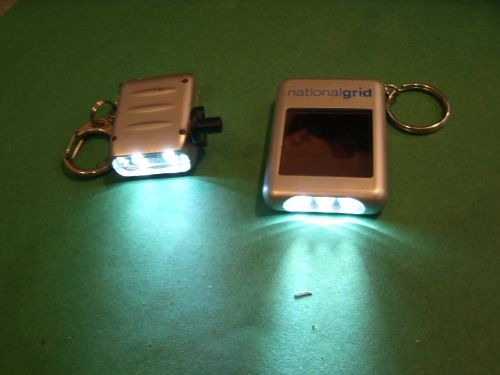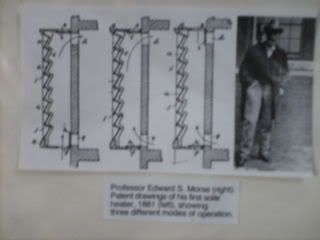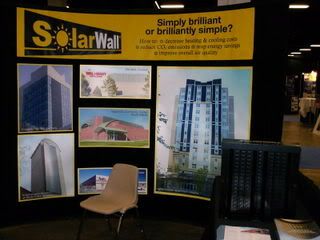Zero net energy is a growing body of practice in which buildings produce all the energy they consume. It is the application of high efficiency construction in combination with renewable energy, usually solar or geothermal. Sometimes it is also called net zero energy building.
I began to collect links to various zero net energy building projects around the world back in 2013 soon after, in the story I heard, Cambridge City Councillor Minka Van Beuzekom proposed it as a building standard for a large development MIT is planning in East Cambridge. That idea didn't fly (the development is part of an ecodistrict instead, as I understand it) but did lead to a task force which has prepared a path to zero net energy standards in the city.
http://www.cambridgema.gov/CDD/Projects/Climate/NetZeroTaskForce
The EU has adopted the building energy target of nearly zero and all new public buildings must be nearly zero-energy by 2018 with all new buildings, public or private, constructed to nearly zero-energy standards by the end of 2020.
https://ec.europa.eu/energy/en/topics/energy-efficiency/buildings/nearly-zero-energy-buildings
CA has a 2020 zero net energy goal "focused on new residential construction, including single-family and low-rise multifamily (3 stories or less) buildings, as well as low and moderate income housing within these categories."
http://www.cpuc.ca.gov/PUC/energy/Energy+Efficiency/Zero+Net+Energy+Buildings.htm
The knowledge and materials to build buildings that are comfortable without outside energy inputs through advances in energy efficiency and energy production on site have made zero net energy buildings practical and affordable. They will only become more so as time goes on, examples accumulate, and experience grows.
Since we build about a million new residential units a year, nearly 1% of the units available, these changes in the way we shelter ourselves will have increasingly significant effects on our energy usage in the years and decades after 2020 in, at least, Cambridge, CA, and the EU.
July 12, 2013
http://www.skyscrapercenter.com/building.php?building_id=454
Pearl River Tower, Guangzhou, China 71 floor zero net energy skyscraper
Maybe some of the ideas will work in Kendall Square and other areas of Cambridge.
And then there's also these:
http://www.news.ucdavis.edu/search/news_detail.lasso?id=10022
UC Davis West Village 130-acre development for about 3,000 people in 662 apartments and 343 single-family houses
http://www.springleafboulder.com/
Zero net energy neighborhood in the US, being built near Boulder, CO - hat tip inhabitant
http://www.dkahn.com/geos.html
Zero net energy neighborhood in Arvada, CO
http://www.nytimes.com/2013/06/05/realestate/commercial/walgreen-builds-a-zero-net-energy-store.html
Walgreens zero net energy store
http://www.greencarcongress.com/2010/05/nzn-20100505.html
The Net-Zero Neighborhood: Advanced Energy Storage and Highly Efficient Photovoltaics Take Transportation Off the Gasoline Grid and Residential Off the Electric Grid
July 18, 2013
article on status of US zero net energy building
http://autodesk.typepad.com/bpa/2013/07/early-energy-simulation-dont-design-your-zero-energy-building-building-energy-analysis.html
"Getting To Zero 2012 Status Update: A First Look at the Costs and Features of Zero Energy Commercial Buildings"
http://newbuildings.org/getting-zero-2012-update
The largest of the buildings mentioned is the NREL Research Support Facility with 360,000 ft2 and five or six stories.
August 4, 2013
20 story PassivHaus building in Vienna
http://www.treehugger.com/green-architecture/passivhaus-aint-no-house-its-20-storey-building.html
https://www.oegnb.net/upload/file/FORUM_Raiffeisen_0413_025-026-1.pdf - article in German
http://www.viennareview.net/news/ideas-and-trends/raiffeisens-upward-sustainability
November 12, 2013
Architecture Zero
http://architectureatzero.com/2013/11/08/prime-cut/
March 19, 2014
Ecocity Frameworks and Standards
http://www.ecocitystandards.org
May 12, 2014
Two Positive Net Energy Buildings
Zero Net/Positive Net Energy Retrofit in Norway
http://snohetta.com/project/40-powerhouse-kjorbo
Elithis Tower, 10 story zero net/positive net energy office and retail building in Dijon, France
http://www.innovapedia.org/home/innova-green/elithis-tower-remarkable-energy-efficient-structure/
June 13, 2014
Aktivhaus
http://planetsave.com/2014/06/10/tallest-german-residential-high-rise-solar-aktivhaus/
July 7, 2014
Not a large building but an instrumented test house which actually produced more energy than it consumed even after an unusually bad winter:
http://cleantechnica.com/2014/07/07/nist-net-zero-energy-test-house-blows-past-goals-one-year-trial/
July 11, 2014
Swiss Company Renovating to Net Zero and Net Positive Energy
http://www.viriden-partner.ch/en/index.cgi?pk=apartment_buildings
Saw Karl Viriden present some of his work today at the Watt d’Or event at Northeastern.
January 12, 2015
First Passivhaus-certified laboratory building in USA, University of Chicago's Warren Woods Ecological Field Station
http://www.gologic.us/passivhaus/
March 11, 2015
Philippe Starck’s prefab positive net energy house - up to 150% of the energy the house needs
http://www.dezeen.com/2014/10/17/philippe-starck-path-prefabricated-low-energy-home-prototype/
Brooklyn’s BrightnGreen zero net energy 8 unit residence
http://brightngreen.com/solar/
Low carbon nine-story building in Tianjin, China
http://www.atkinsglobal.com/en-GB/projects/h2-low-carbon-project-for-teda-modern-service-district-tianjin
General Services Administration's Net-Zero Energy Task Group
http://www.federalnewsradio.com/445/3660266/GSA-task-force-plans-for-future-net-zero-energy-buildings
http://www.gsa.gov/portal/getMediaData?mediaId=196947
Zero Energy Building in Norway, designed to "achieve a balanced carbon footprint throughout the course of their whole existence, including construction, operations, and demolition" and providing "more energy than it takes to build it, operate it, and charge the car in the garage"
http://snohetta.com/project/188-zeb-pilot-house
Cropthorne House exceeds German Passivhaus standard by a factor of three (heat demand 5kWh/m²/yr). Completely 'water-neutral' by use of harvested rainwater and composting toilets – ...Uses neither mains water or drainage, nor the energy required to deliver them.Intelligent use of renewable energy makes the house carbon negative.
http://www.cropthornehouse.co.uk
[thermal mass for seasonal storage?]
99 Story Net Zero Skyscraper In Jakarta
Designed by US architectural firm Skidmore, Owings and Merrill, the 1740′ tall, 99-story net zero skyscraper will generate as much energy as it uses, have zero waste discharge, and feature reduced water demand. The architects say this is “the world’s first supertall tower for which energy is the primary design driver.”
http://cleantechnica.com/2015/01/04/pertamina-builds-net-zero-skyscraper-jakarta-hq/
First Passivhaus-certified laboratory building in USA, University of Chicago's Warren Woods Ecological Field Station
http://www.gologic.us/passivhaus/
General Services Administration task group recommended that at least 50 percent of the GSA’s and the entire federal government’s building area achieve net-zero energy status by 2030
http://cleantechnica.com/2015/02/06/gsa-lead-net-zero-energy-building-revolution/
R-951 Residence is the first Passive House certified and Net-Zero capable buildings to be completed in New York City, three 1,500 square foot apartment condominiums
http://www.r-951.com
http://inhabitat.com/nyc/tour-brooklyns-first-solar-powered-passive-house-condo-building-in-prospect-heights-photos/
Net zero home infographic
http://assets.inhabitat.com/wp-content/blogs.dir/1/files/2015/02/net-zero-home-of-the-future-infographic.jpg
Zero waste textile factory
http://www.exploration-architecture.com/projects/zero-waste-textile-factory
http://inhabitat.com/explorations-zero-waste-textile-factory-design-is-inspired-by-nature-designed-by-science/nagpur-zero-waste-textile-garden/
Net zero retrofit office rental building
http://rmw.com/projects/435-indio-way/
Australian carbon positive pre-fab house
http://www.archiblox.com.au/projects/carbon-positive-house/
Swedish EcoDataCenter - Three buildings, 23,250 square meters, 18 megawatts from Sun, wind, water and secular biofuels, 24/7/365
http://ecodatacenter.se/en/
Modular School Buildings Move to Net Zero Energy - these schools are being erected now in CA
http://www.gundemhaberleri.org/modular-school-buildings-move-to-net-zero-energy.html
April 23, 2015
Tucson/Pima County Net Zero Energy Standard
http://www.pima.gov/netzero/
Zero Energy Performance Index
http://newbuildings.org/zero-energy-performance-index-zepi
Zero energy lab at University of North Texas
http://eastfieldnews.com/2015/03/24/zero-energy-lab-recycles-sun-water-power/
Net zero DC microgrid for CA Honda distribution plant
http://planetsave.com/2015/03/25/bosch-building-dc-microgrid-honda-california/
Passive house in NYC
http://www.nytimes.com/2015/03/29/realestate/the-passive-house-in-new-york-city.html
2015 List of zero energy buildings in USA and Canada
http://newbuildings.org/sites/default/files/2015ZNEbuildingsList.pdf
Zero net laboratory at Bristol Community College, Fall River, MA
http://www.sasaki.com/blog/view/558/
Prototype 4x positive energy portable classroom for Hawaii
http://andersonanderson.com/2013/02/01/energy-positive-portable-classroom/
Sustainable Education Every Day (SEED) Living Building classroom in Pittsburgh
http://theseedcollaborative.org/seedclassroom/
Richmond, VA single-story seven units “net-zero energy” multifamily apartment building for lower-income seniors
http://www.multihousingnews.com/features/getting-to-zero/1004118318.html
San Leandro, CA Zero Net Energy Center - the very first large-scale commercial building retrofit to meet the standards of the U.S. Department of Energy as “zero net energy”. It is also the new home of the IBEW Local 595 and the Northern California Chapter of NECA’s Joint Apprenticeship and Training Program. The building celebrated the completion of its first year of occupancy in September, 2014 and proved its zero net energy status.
http://www.znecenter.org
UC Merced has taken a Triple Zero Commitment to consume zero net energy and produce zero waste and zero net greenhouse gas emissions by 2020
http://www.ucmerced.edu/triple-zero-commitment
Analysis of load match and grid interaction indicators in net zero energy buildings with simulated and monitored data
http://www.scopus.com/record/display.url?eid=2-s2.0-84907707782&origin=inward&txGid=02644C134DF17E1B39B736A671D4F331.N5T5nM1aaTEF8rE6yKCR3A%3a2
ASHEAE Net Zero Energy video
https://www.youtube.com/watch?v=pQFJr5E7_R0
Germany's power flow animation of electricity production, consumption and transport at 100% renewable energy
http://www.kombikraftwerk.de/100-prozent-szenario/power-flow-animation.html
June 12, 2015
Net positive townhouses in Roxbury neighborhood of Boston
http://www.is-architects.com/roxbury-e
Federal and state mandates are influencing how buildings and construction projects are being designed, constructed, and operated, as well. California’s recently passed building code revisions that require all new residential and commercial construction to achieve zero net energy by 2020 and 2030, respectively. Similarly, new requirements by the federal and state governments call for all new federal buildings to achieve zero net energy by 2030 and all new state buildings to be built as zero net energy facilities after 2025.
https://ucsandiegoextension.wordpress.com/tag/zero-net-energy/
AC/DC Microgrid
http://www.engineering.com/ElectronicsDesign/ElectronicsDesignArticles/ArticleID/10092/Tesla-and-Edison-Reconciled-An-ACDC-Microgrid.aspx
2015 Race to Zero Student Design Competition on cost-effective, zero energy homes for mainstream builders - 33 entries from 27 universities
http://energy.gov/eere/buildings/2015-results
Description of winning entry
http://www.pressreleaserocket.net/students-design-efficient-home-with-central-air-cost-of-only-38-annually/178452/
Hybrid electric buildings - storage to microgrid to a fleet of such buildings to act as a peaker plant - not zero net energy but the implications are applicable
http://www.greentechmedia.com/articles/read/advanced-microgrid-solutions-raises-6.9m-for-hybrid-electric-buildings
Barcelona building with responsive bioclimatic skin
http://inhabitat.com/responsive-bioclimatic-skin-wraps-around-leed-gold-icta-icp-building-in-barcelona/icta-icp-by-h-arquitectes-2/?extend=1
Zero energy prefab homes (CA)
http://www.wisatagrafi.com/zero/zero-energy-prefab-homes.html
Zero net energy development in Davis, CA, two thousand occupants
http://cityminded.org/two-thousand-live-net-zero-and-love-it-13361
Sekisui Heim Japanese construction company builds "zero-utility cost" houses and has constructed over 160,000 units with "solar generation systems"
http://www.sekisuichemical.com/about/division/housing/
October 8, 2015
World's first high rise Passivhaus (?) for Cornell Tech in NYC
http://www.handelarchitects.com/projects/project-main/cornell-res-main.html
Belgian study on retrofit systems for zero energy buildings
http://biblioteca.universia.net/html_bura/ficha/params/title/screening-and-analyzing-retrofit-systems-for-zero-energy-renovation-and/id/61497291.html
Washington DC study on cost and value of net zero and living buildings
http://living-future.org/news/dc-studies-cost-and-value-net-zero-living-buildings-new-report#.VZnIAWzsu_s.twitter
Belgium's largest PassivHaus breaks ground in Brussels
http://www.neutelings-riedijk.com/index.php?id=10,659,0,0,1,0
http://inhabitat.com/belgiums-largest-passive-office-building-breaks-ground-in-brussels/
Zero Carbon House from Cardiff University
http://www.bbc.com/news/science-environment-33544831
http://inhabitat.com/energy-positive-solcer-house-in-the-uk-can-nearly-put-out-nearly-twice-as-much-energy-as-it-uses/
USA's first Zero Net affordable apartments in Woodland, CA
http://www.capradio.org/articles/2015/06/29/first-zero-net-affordable-apartments-open-in-woodland/
New Construction Guide and the Architecture 2030 Challenge
http://newbuildings.org/blog/new-construction-guide-and-architecture-2030-challenge
Best practices for zero net energy buildings from Marc Rosenbaum
http://www.greenbuildingadvisor.com/blogs/dept/guest-blogs/best-practices-zero-net-energy-buildings
First net zero energy retail store in New York State
http://www.longislandweekly.com/long-islands-first-net-zero-energy-retail-store/
Axiom House - flatpack prefab net-zero concept home at half the cost of a standard home
https://www.indiegogo.com/projects/acre-zero-energy-prototype-home
http://www.acredesigns.com/axiom/
DOE Common Definition of Zero Energy Buildings
h
ttp://energy.gov/eere/buildings/downloads/common-definition-zero-energy-buildings
Japanese Zero-Energy Buildings: "Japan's 10 major homebuilders sold between 10,000 and 20,000 zero-energy houses in fiscal 2014. That number is expected to rise to more than 50,000 by fiscal 2020."
http://asia.nikkei.com/Business/Companies/For-Japan-homebuilders-zero-is-magic-number
NESEA’s High Performance Buildings Database, a joint project with the Net Zero Energy Coalition, will be unveiled at the Building Energy NY conference on October 15. The database showcases projects that qualify via participation in an eligible building performance program or by providing energy use data or an energy model as evidence of achieving zero net energy on an annual basis, plus or minus 10 percent. Each case study in the filterable database covers over 150 data points, and has been peer-reviewed by a net zero expert. Submissions are encouraged.
http://nesea.org/conference/buildingenergy-nyc-2015


